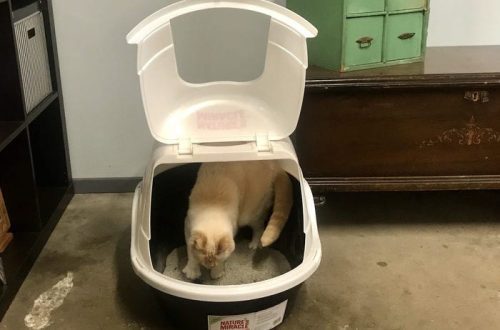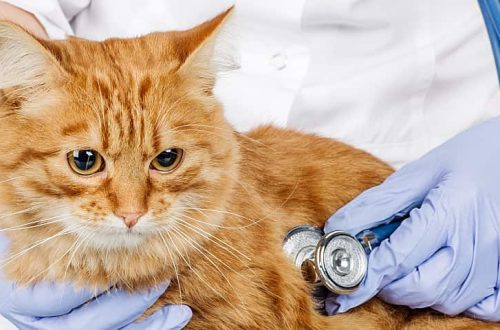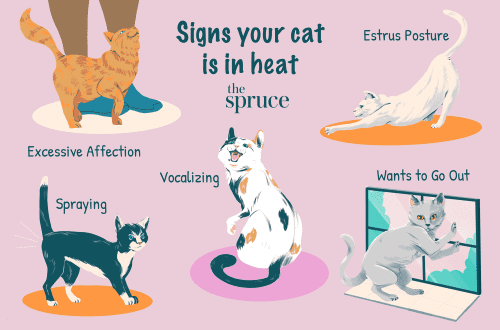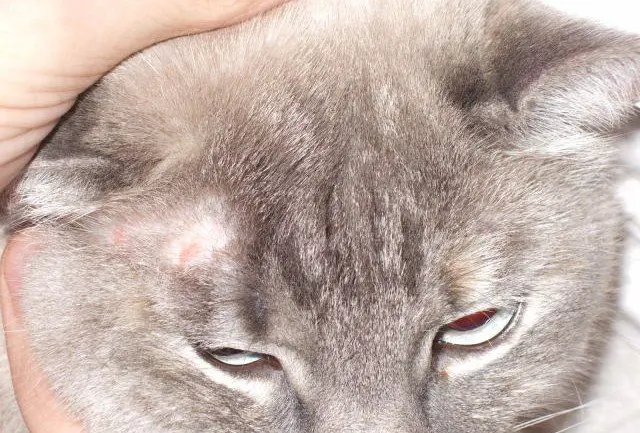
Lichen in cats – important information, signs, photos, treatment
Contents
What is deprive
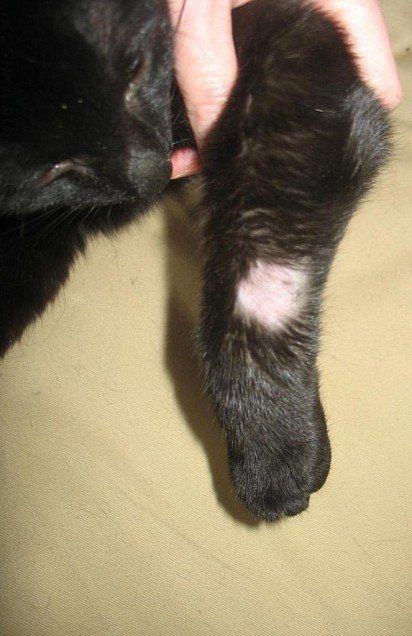
The paw of a cat infected with lichen
Lichen in cats is generally called skin diseases, in which small itchy nodules of the rash form, hair and nails suffer. The nature of the formation of the disease can be different: a virus, an infection, an allergy, or simply a decrease in immunity. Other animals are also susceptible to diseases: dogs, rabbits, guinea pigs, ferrets.
Infection occurs both through direct contact and through household items. Cats that are let out by their owners are usually infected with lichen from stray animals or from rodents. There are times when a cat is a carrier of an infection, while she herself does not get sick.
Lichen in cats and cats is quite easy to cure, especially if it is detected in time. Usually, recovery occurs within 3 weeks, but if the deep layers of the skin are affected, then recovery can take up to six months. The incubation period ranges from several days to 3-4 months. At this time, the cat is already infected, but there are no signs of lichen.
Causes
The most common cause of lichen in cats is a fungal infection of species such as Trichophyton Microsporum canis, Microsporum gypseum. Getting on the animal’s hair, microbes begin to multiply, since a warm and humid environment creates favorable conditions for this. If a cat has strong immunity, then her body will independently cope with the infection and suppress it, preventing any visible manifestations.
But if the animal is weakened, ill, or has just recovered from some kind of illness, then with a high degree of probability, lichen will spread over the skin. In addition, kittens and young cats that have not yet fully developed immunity are at risk. Some artificially bred breeds, such as the Persian and Scottish, do not have innate protection against lichen, and therefore also fall into the risk group.
Risk factors for lichen in domestic cats and cats:
- free range on the street;
- treatment with immunosuppressants;
- nutritional errors, inadequate diet;
- infection with parasites;
- malignant neoplasms.
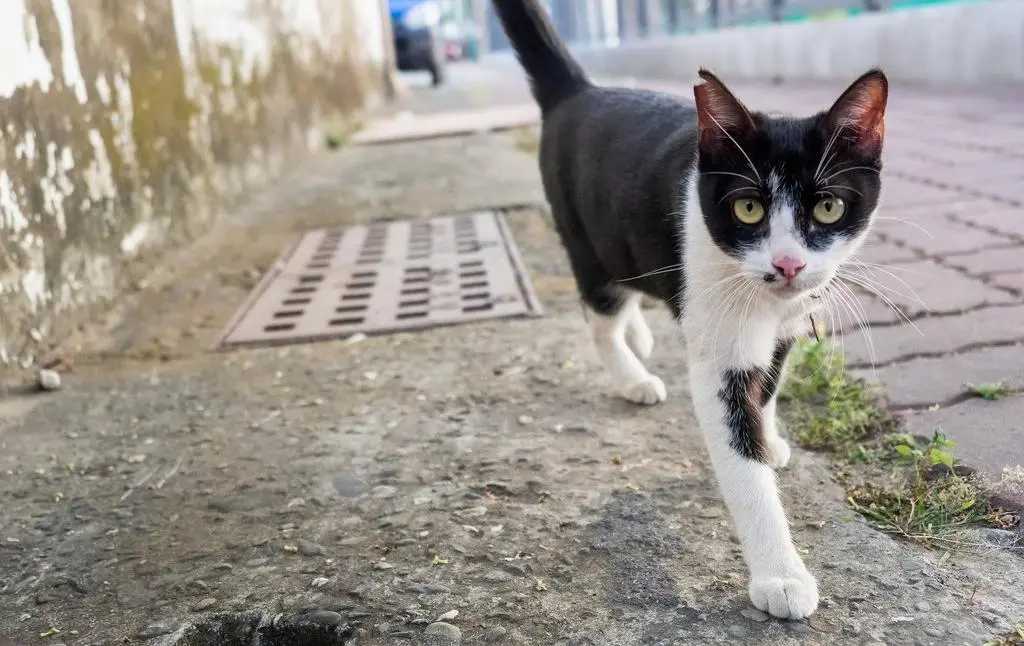
Cats roaming freely on the street are at risk
Varieties of lichen
Under the general name “lichen” various diseases with similar manifestations are hidden.
Ringworm It is fungal in nature, contagious to humans and especially dangerous to children. It is also called “trichophytosis”, “microsporia”, “cat’s lichen”. The spores of the fungus are very stable in the external environment. For example, in scales of exfoliated skin, they remain viable for 6-10 years. In the soil, spores die in 2-3 months, and at home they can be active from 2 months to a year and a half. They settle on surfaces, feeling especially good on textiles. Interestingly, ringworm can be transmitted not only from a cat to a person, but vice versa.
Symptoms of Ringworm in Cats
Treatment for ringworm in cats
pityriasis, or versicolor versicolor, is also a dangerous fungal disease to which a person is also susceptible. It is also called “sun fungus” and “beach lichen” due to the fact that it reaches its greatest distribution in the summer. The causative agent is the yeast-like fungus Pityrosporum. About 90% of people in the world are its carriers, and it is also present on the skin of almost any animal. Under certain conditions, the fungus becomes pathogenic, causing the development of lichen in cats and cats. The provoking factor is the disruption of the sebaceous glands, the consequence of which is excessive oiliness of the skin. It is especially likely to get sick in hot, humid weather.
Symptoms of pityriasis versicolor in cats
Treatment of pityriasis versicolor in cats
Pink, or shingles, has an allergic nature, manifests itself with a decrease in immunity. It is considered non-infectious and harmless to humans, however, scientists do not have a consensus on this matter. There is reason to believe that pink lichen may be caused by some kind of virus that has not been clearly studied at the moment. The disease is inherited, after treatment it sometimes returns with renewed vigor, so it is better to limit the contact of a sick cat with people, especially children and the elderly.
Symptoms of pink lichen in cats
Treatment for rosacea in cats
weeping lichen, or eczema, is a non-contagious type of lichen that manifests itself in cats as an allergic reaction to some kind of irritant. This can be external influences, such as household chemicals, detergents, or internal factors, such as hormonal failure, stress. For humans, this type of lichen is not dangerous.
Symptoms of weeping lichen in cats
Treatment of weeping lichen in cats
Symptoms
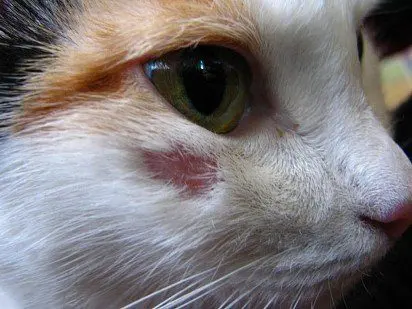
One of the main signs of lichen is hairless spots.
There are a number of common symptoms for all types of lichen in cats and cats:
- hair loss;
- peeling and inflammation of the skin;
- change in pigmentation;
- inflammation;
- severe itching.
ringworm symptoms
With ringworm, a cat loses certain areas of its coat. But the disease begins with a barely noticeable small rash under the coat. Signs that should alert the owner are increased anxiety of the animal and frequent scratching. The development of ringworm in cats and cats is characterized by the following:
- round scaly spots appear on the skin, crusts form;
- wool in the places of manifestation of the rash thins, the hairs become brittle;
- under the fallen off scales, smooth reddened skin is visible;
- spots expand, take an oval shape;
- the spread of serous-purulent crusts leads to the formation of scabs;
- on the skin areas under them there is completely no hair, after recovery it will no longer be restored;
- if the cat is not treated, the spots grow, forming extensive foci of baldness.
The spots are painful, itchy, cats often gnaw and scratch them. There is also such a form of ringworm, in which all the described signs are either absent or not clearly expressed. Such a clinical picture is called atypical. Only individual hairs are affected. Lichen is invisible, respectively, a person does not take any measures until the disease is already running.
Ringworm symptoms vary depending on the specific pathogen. In some cases, only the head and muzzle of the cat are affected, in others the spots spread to the entire body.
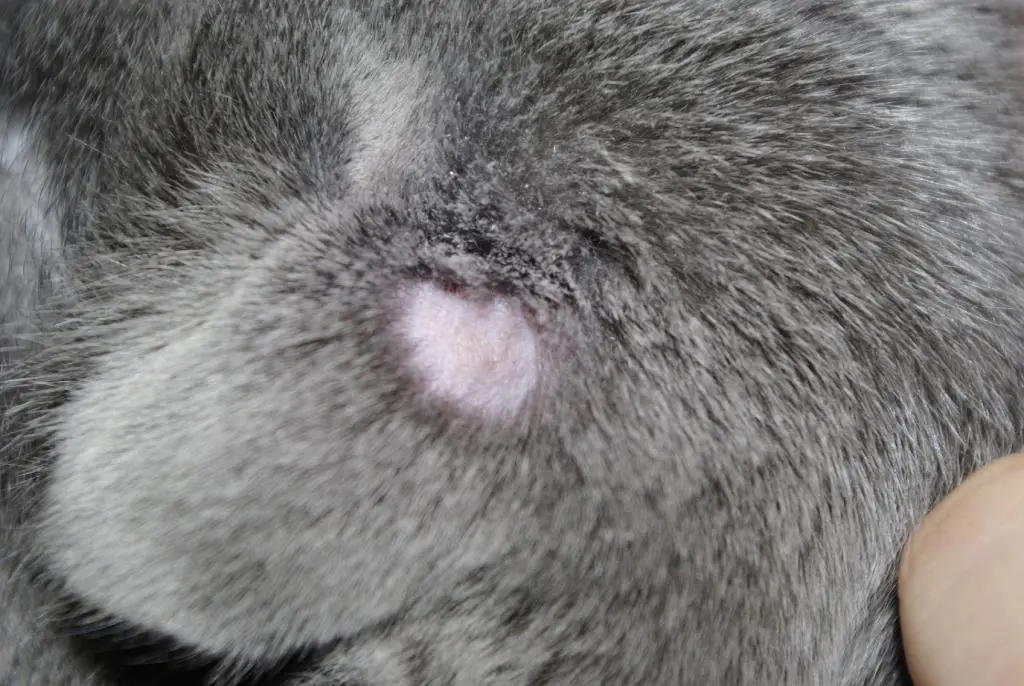
Ringworm in cats
Symptoms of multi-colored (pityriasis) lichen
Pityriasis versicolor initially looks like a small, pale, oval spot on the skin of a cat or cat. But after a few days, the number of spots increases, they grow together, forming irregularly shaped lesions. If the fungus gets into the claw, then its deformation occurs.
Interestingly, itching in this form of lichen is practically absent. And when it gets cold, the spots can disappear on their own. The affected surface can be either smooth or scaly. Otherwise, pityriasis versicolor is practically no different from its other types.
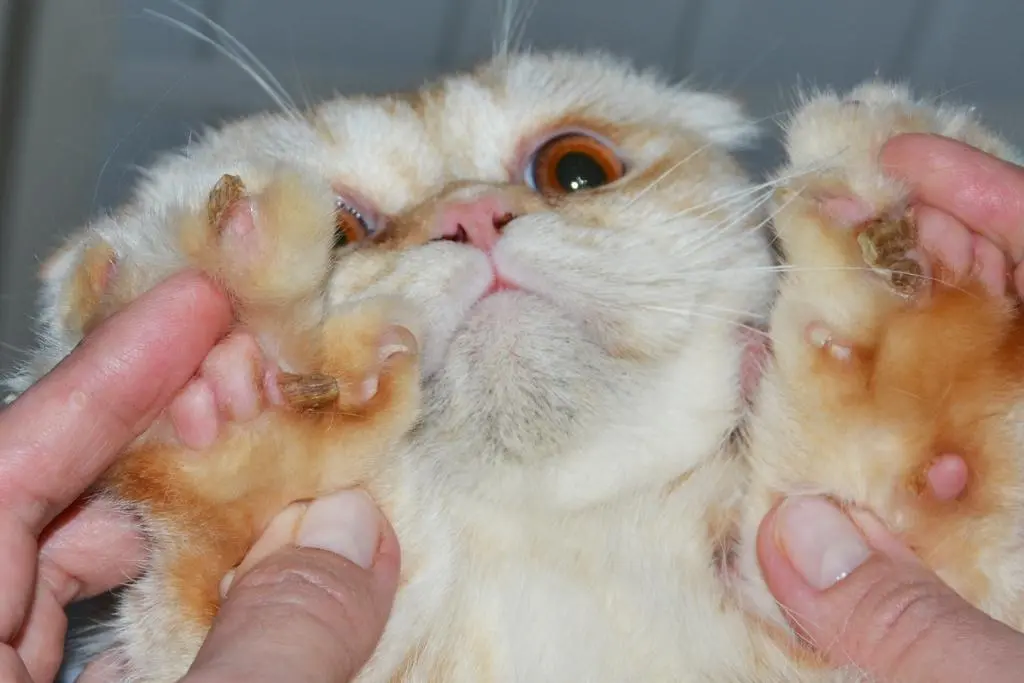
Pityriasis versicolor in cats
Symptoms of pink (shingles) lichen
Pityriasis rosea can appear as many small spots like an allergic rash, or it can be expressed as large pinkish spots up to 2 cm in diameter. Most often lesions appear on the abdomen, inner thighs, in the groin of the animal. Itching may be slight, and sometimes absent altogether.
In the center, the spots are flaky, and the skin is smooth along the edges. In severe cases and the absence of therapy, sepsis may occur if pathogenic microorganisms enter and take root in the lesions. Sometimes pink lichen in a cat is accompanied by fever, joint pain, swollen lymph nodes, and general malaise.
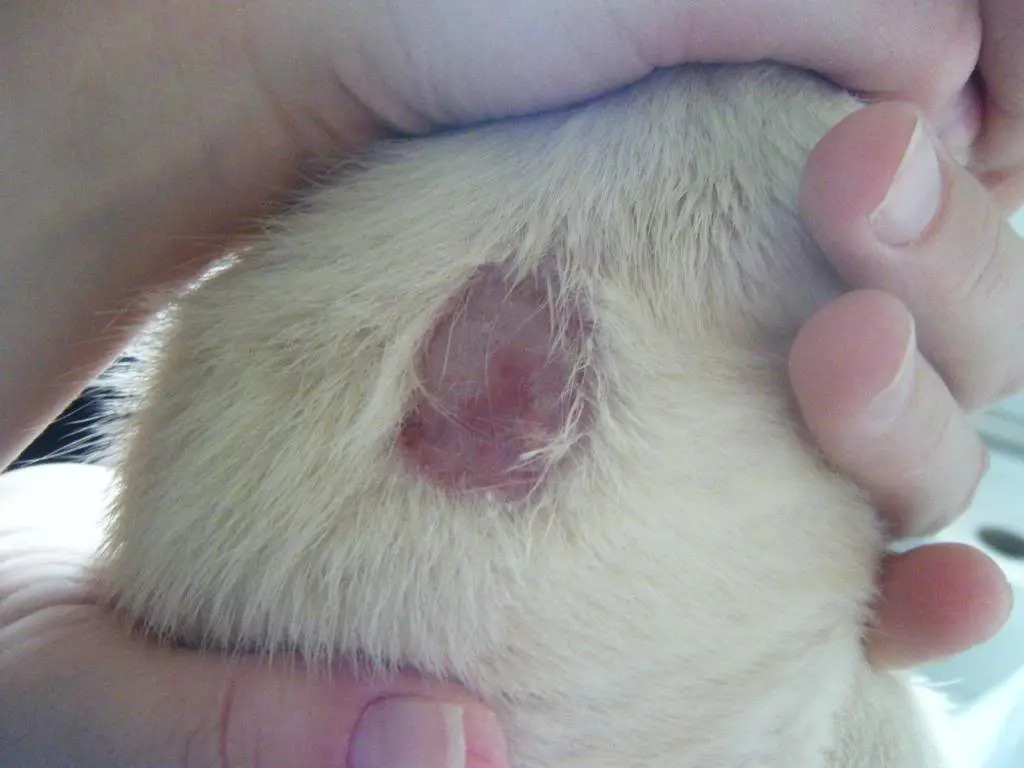
Pink versicolor in cats
Symptoms of weeping lichen (weeping eczema)
Weeping lichen in cats and cats also begins with red spots. The skin in these places is hotter than around, and also very painful. The rash is fluid-filled blisters. When these bubbles burst, their contents are released, which causes skin infection, the formation of abscesses and crusts. Sometimes weeping lichen is accompanied by a feverish condition. For humans, this type of disease is not dangerous.
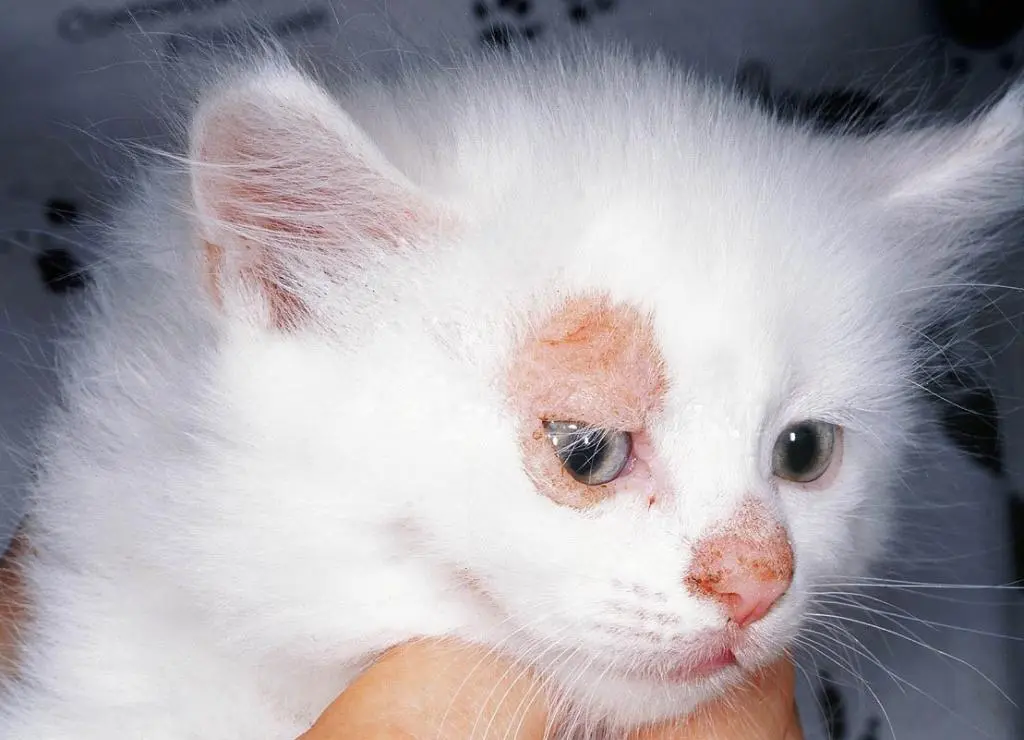
Lichen planus
What to do if you suspect lichen in cats and cats
The first thing to do if you suspect lichen in a domestic cat or cat is to isolate the sick animal. No need to lock him in a cage or any other tight enclosed space. A separate room or a loggia is suitable if it is warm.
Next, you need to urgently contact a veterinarian for an accurate diagnosis. Its purpose is to obtain data on the cause and causative agent of lichen. Based on the study, the doctor will be able to choose the right therapy.
Important: it is strictly forbidden to bathe a pet if you notice signs of lichen in it. Together with water, lichen spores will spread to the whole body, thus, you will increase the affected area many times over.
During the entire period of diagnosis and treatment of lichen in cats, the following recommendations must be observed:
- use separate dishes for a sick pet;
- if there are other animals in the house, then they need to be isolated, but it is better to take them out of the room for a while to prevent an epidemic;
- do more frequent disinfecting cleaning, paying special attention to the places where your cat likes to be most of all;
- wash all bedding and rugs in a disinfectant solution;
- Treat upholstered furniture with a solution of water and vinegar.
The following disinfectants are used for disinfection:
- quartz lamp – you must turn it on in an infected room for 20-25 minutes;
- hot water with the addition of whiteness or any other chlorine bleach for washing clothes and towels;
- hot steam for processing upholstered furniture;
- water with the addition of bleach, alcohol, iodine, vinegar, soap-soda mixture or 3-4% chlorhexidine for washing surfaces.
Remember that you need to wash not only the floor, but also, if possible, walls, doors, tables, baseboards, paying special attention to corners, crevices and other hard-to-reach places.
Diagnostics
Diagnosis of lichen in cats and cats begins with a visual examination by a veterinarian. The doctor interviews the owner and examines the medical record, if available, to get an idea of the general condition of the animal, the presence of risk factors and predispositions to the disease.
After a clinical examination, one or more examination methods are applied.
- Wood’s Fluorescent Lamp. Under the influence of rays, the affected areas are highlighted in green. But this method of determining lichen in cats is only partially effective and does not have 100% reliability. Some types of fungus do not emit a glow, and vice versa, harmless spores can give a false positive signal.
- Examination under a microscope of scrapings from the skin or affected hairs. This is a more accurate method than the Wood’s lamp, and the result will also be known immediately. The disadvantage of the examination is that it is not always possible to see a pathogenic organism, so a negative result does not mean that the cat does not have lichen.
- Isolation of the pathogen in a nutrient medium is the most accurate way to determine lichen. Samples of animal skin are placed in a special composition that is favorable for the propagation of infection. For some time, observation is carried out, then the grown microflora is studied under a microscope. The disadvantage of the method is the long time it takes – it will take up to 3 weeks to get the result.
Additionally, a blood test is taken from a cat with suspected lichen, the presence of parasites and chronic diseases is checked.
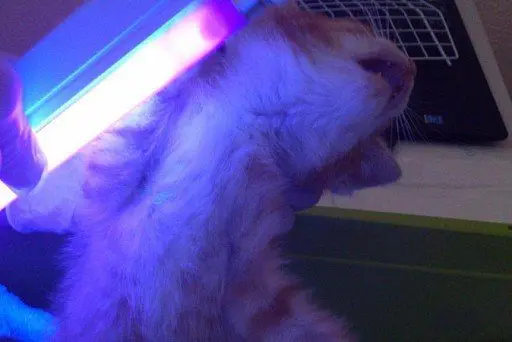
Examining a cat with a Woods lamp
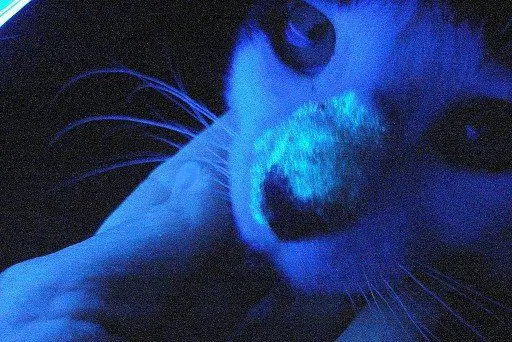
Treatment depriving
Treatment for lichen in a cat depends on its type. In some cases, you can get by with ointments, in others you will need complex therapy with pills and injections. In the initial stages, the disease is much easier to defeat. The choice of how to treat lichen depends on the following factors:
- the severity of the disease;
- the state of immunity and the breed of the cat;
- the size of the affected areas.
Wound healing occurs in about 1-2 weeks. In the absence of purulent processes, the complete renewal of the coat will end in 4-5 weeks. Otherwise, age spots or scars may remain. The disappearance of symptoms does not guarantee a cure for lichen. This can be confirmed by laboratory tests.
Ringworm treatment
Ringworm in an advanced form can cause serious complications in cats and cats, therefore, after confirming the diagnosis, complex therapy is immediately prescribed, including the following means:
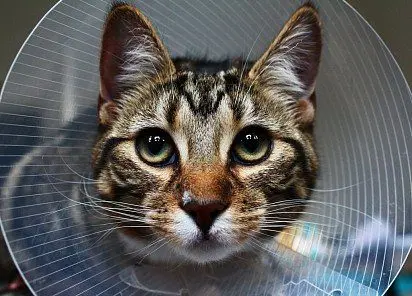
Protective anti-lick collar
- antifungal ointments, shampoos and creams;
- pills;
- injections.
Before local treatment, the edges of the affected areas are shaved. On the sheared places, the contact of the drug with the skin is better, therefore, the effectiveness of the effect is increased. The following drugs are commonly used:
- antifungal shampoos, such as Veterinary Formula ANTISEPTIC & ANTIFUNGAL, Doctor, Nizoral, Sebozol. The funds are applied to the areas affected by lichen, foam and aged for several minutes, after which they are thoroughly washed off. The cost of shampoos is approximately 200-500 rubles per bottle;
- topical agents: Epacid-F, Fungin, Yam ointment, Sanoderm, Clotrimazole, Miconazole. “Epacid-F” lubricates the skin after removing the crusts, “Fungin” is used once a day, the rest of the funds – from 2 to 5 times a day. It is very important not to let the cat lick off the preparations after application, so it is advisable to put a special collar around her neck. The cost of funds varies from 30 to 400 rubles.
Since ringworm in cats often becomes chronic, topical treatment should not be limited. The doctor will most likely prescribe medication in the form of tablets or injections. Of the tablets, Griseofulvin, Itraconazole, Terbinafine or their analogues can be prescribed. These medicines are intended for humans, but have also been successfully used to treat animals. For cats, they are added to food in crushed form. If this is a capsule, then powder should be poured out of it into the food. The cost of medicines starts from 200 rubles and depends on the brand and manufacturer.
Important: tablets can only be used as directed by a veterinarian. All medicines used are intended for humans, so only a doctor can calculate the exact dosage for a cat.
The best and most effective way to treat ringworm in cats and cats is to use vaccines. They can also be used for prevention, but if the animal has already become infected, injections are given for treatment, just in a different dosage. Such preparations as Vakderm-F, Polivak TM, Microderm are used. They are inexpensive, 150-200 rubles. But vaccines have a number of contraindications: they cannot be given to sick and severely weakened animals, at elevated temperatures and a feverish state, in the presence of infectious diseases. Some drugs are contraindicated in the second half of pregnancy.
A special antifungal agent for animals is “Dermicocide”. It is injected into the thigh muscle 2-3 times with a break of 5 days. It is used when it is impossible to use vaccines. At the same time, it is contraindicated in kittens and pregnant cats, as well as in the presence of pathologies of the liver and kidneys. It costs “Dermicocide” about 400 rubles.
Treatment of multi-colored lichen
The principles of treatment of multi-colored lichen in cats are approximately the same as in the previous species. Antifungal therapy is carried out, hygiene is observed, immunity is strengthened. Both topical preparations and taken orally in the form of tablets or injections are used.
Most often, drugs based on enilconazole are prescribed, for example, Imaverol. An emulsion is prepared on its basis: one part of the drug is diluted in 50 parts of distilled water. The solution is treated with the affected areas every three days. With widespread lichen, you can completely immerse the cat in the treatment mixture. The total number of treatments should not exceed four.
In severe cases, the drug “Lime Sulfur” is used. It is a highly concentrated solution of hydrogen sulfide lime. A mixture is also prepared from it: 1 ml of the drug is diluted in 33 ml of water. Treatment is carried out no more than once a week as prescribed by a doctor.
Due to the high toxicity of the substance, precautions must be observed:
- use a mask and protective gloves when handling;
- do not allow the medicine to get into the eyes and mucous membranes of the cat;
- the room in which the treatment is carried out must be well ventilated;
- use a special collar to prevent the cat from licking the drug.
Treatment of pink lichen
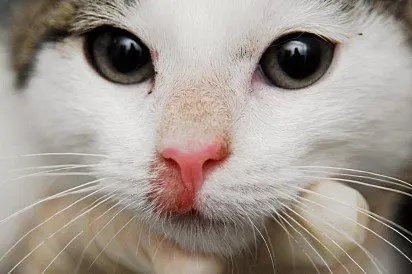
Mild rosacea on a cat’s nose
A mild form of pink lichen in cats and cats can go away without special treatment. Sometimes it is enough to apply measures for the general improvement of the animal’s body: adjusting nutrition, limiting visits to the street, excluding water procedures and exposure to sunlight.
Therapy, first of all, is aimed at combating the symptoms, namely at reducing itching. Antihistamines may be prescribed, and in more serious situations, non-steroidal anti-inflammatory drugs. They should be used exclusively as prescribed by the veterinarian, since uncontrolled intake and excess dosage can lead to a decrease in immunity, which will cause the opposite effect and the development of lichen.
You can use local remedies, including various oils, such as sea buckthorn or apricot. They reduce itching, moisturize the skin, reduce peeling. The most important thing in the treatment of pink lichen is the observance of a set of measures to increase the cat’s immunity and the exclusion of the impact of negative factors.
Weeping lichen treatment
In the treatment of lichen lichen in cats, it is important to accurately diagnose, since among its causes may be hormonal disorders or infection with parasites. To local therapy, it is necessary to add the treatment of the identified cause of lichen. With this type of disease, it is unacceptable to treat a pet on its own.
For topical use, drying agents are used:
- Salicylic ointment is an antiseptic with an astringent effect. Twice a day, the ointment is applied around the affected areas. Removal of inflammation and restoration of the skin occurs within 10-14 days.
- Sulfur ointment effectively fights inflammation, has an antimicrobial and antifungal effect, copes with such a parasite as a skin mite. Processing is done twice a day for 1-3 weeks. To prevent the cat from licking off the ointment, you can make gauze applications and fix them with a band-aid.
- Ichthyol ointment is an effective remedy, but it has an unpleasant odor. Improves regeneration, relieves inflammation, has an antimicrobial effect. Also applied twice a day.
- Tar ointment is a natural remedy that helps restore the skin. Full recovery usually occurs within 7-10 days.
Traditional methods of treatment
In some cases, for example, when a cat is pregnant, it is impossible to treat lichen with aggressive drugs so as not to harm future kittens. In such situations, medicinal plants, alcohol, iodine and various oils are used. It is possible to carry out treatment with folk recipes only in the initial stages of the disease.
Herbal medicine uses oregano, valerian, tricolor violet, burdock, chamomile, plantain, yarrow and many other plants. Recipes involve the preparation of decoctions for oral administration or solutions for topical use.
There are several useful recipes for treating lichen in cats.
- In equal parts, mix nettle leaves, string, oregano and violets. 2 tablespoons of the mixture pour 200 ml of boiling water, let stand for 20 minutes, then strain. Give the cat this drink in a warm form 3-4 times a day before meals.
- In equal proportions, mix chamomile flowers, horsetail grass, valerian root, creeping thyme herb and licorice root. Pour 1 tablespoon of the collection with 200 ml of boiling water and boil in a water bath for 25-30 minutes, then strain. Give the cat a decoction similar to the previous recipe until complete recovery.
- Dilute a crushed aspirin tablet in 30 ml of alcohol. Treat the affected areas with the resulting solution once every 5-7 days.
- Iodine is well suited for topical application. It can be applied in its pure form, or it can be pre-mixed with valerian and vegetable oil.
- Tea tree essential oil has antifungal properties and helps to improve the overall condition of the skin in cats with lichen. It is used in a diluted form: 3-4 drops must be diluted in a tablespoon of olive oil.
Prevention
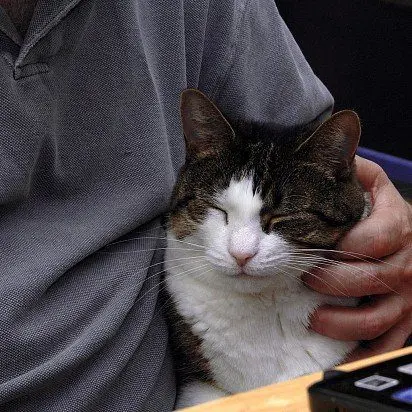
Prevention is the key to health!
The best way to prevent lichen in cats is vaccination. It is also supported by the fact that many varieties of the fungus are resistant to antimicrobial drugs, and it is not always possible for a veterinarian to choose the right effective remedy. Timely vaccinations can protect your pet from disease for a long time.
For the prevention of lichen, the Polivak TM or Vakderm-F vaccines are used. The drug is administered twice with an interval of 10-14 days. Immunity appears 20-30 days after repeated administration and lasts about a year.
In addition to vaccinations, there are a number of common preventive recommendations for preventing infection with lichen:
- minimizing contact of a cat with suspicious animals;
- mandatory treatment of wounds, scratches and any other damage to the skin of the animal with an antiseptic;
- regular veterinary check-ups;
- hygiene, cleaning the room, washing cat accessories;
- timely prevention from parasites;
- complete diet.
Video: Lichen in cats





